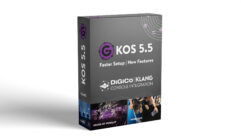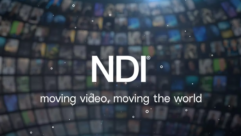
5-Minute Interview: Guy Mullins
Director, New Media Studio in Arizona State University’s Applied Learning Technologies Institute in Tempe. Mullins’ push to find new and better ways to use technology in education and research helped spur ASU’s strategic decision to become a technology-forward organization.
Director, New Media Studio in Arizona State University’s Applied Learning Technologies Institute in Tempe. Mullins’ push to find new and better ways to use technology in education and research helped spur ASU’s strategic decision to become a technology-forward organization.
Pro AV: Last year, you brought Apple’s iTunes to ASU’s more than 60,000 students on four campuses. How has iTunes and podcasting changed what the institute does?
Mullins: We’ve always done some distribution of the content produced here. But even with cable TV, time is limited and you have to be selective in what you put out there. With podcasting and iTunes, what we found is that there’s no limit to disk space or bandwidth, and we can put everything we want out there. We have content that has been literally sitting on shelves for years that we now can get out through podcasting.
Pro AV: Rather than do all the podcast production, your department trains professors and researchers to do the podcast production themselves?
Mullins: Yes, it’s a continual challenge to find the most approachable technologies, those that won’t bog down the professors and researchers and will let them quickly acquire the skills to use them, so they can concentrate on their real jobs: teaching and researching. We can train them to do podcasting with a minimum of effort, especially as the vast majority of what they’re doing is audio only, which is much easier than producing video other than standard talking heads.
Pro AV: You’ve got online a detailed list of podcasting equipment, including manufacturer, model number, price and other specifications, geared to different recording environments, technology levels, sophistication of users.
Mullins: Not a whole lot of research went into that, but we wanted to get up some guidelines for some of our less tech-savvy users, so they’d have some idea of what would go into different kinds of productions. It ranges from free software on their PCs to full-scale interactive presentations.
Pro AV: Your staff is experienced AV pros. For them, what are the differentiators between podcasts or videocasts and productions using more sophisticated technology?
Mullins: Our approach is from a production point of view. Through RSS, we’ve got the same distribution channels as the major networks. We’ve done a lot of big, multicamera TV shoots with content going out on DVDs, although in a fairly limited distribution. What we’re beginning to do is instead focus on audio, on high-profile events like major guest lecturers. We’ll go in and pull the audio only, and issue it as a podcast. That’s the first-step model.
Pro AV: Where are you now?
Mullins: It’s not just the technology. We’re primarily working with faculty and research staff to try to get people to use this new media to do new things. I see our primary role as a research and development arm, finding ways that technology applies to education. With podcasting, we’re learning how to use it to put supplemental materials into classroom course content.
Pro AV: So the technology is just the base for your staff?
Mullins: Exactly. I see our job as figuring out how we can take our technology expertise and apply it to education in new ways, to do more than just repurpose what’s been done before. So we can give people the opportunity to do something new rather than the same thing we’ve always done, just in a different way. Our president’s goal is “inspired research,” to be actively engaged in using tools — media tools, in my case — of your discipline to develop new ways of learning. What we’re doing is definitely a challenge.










